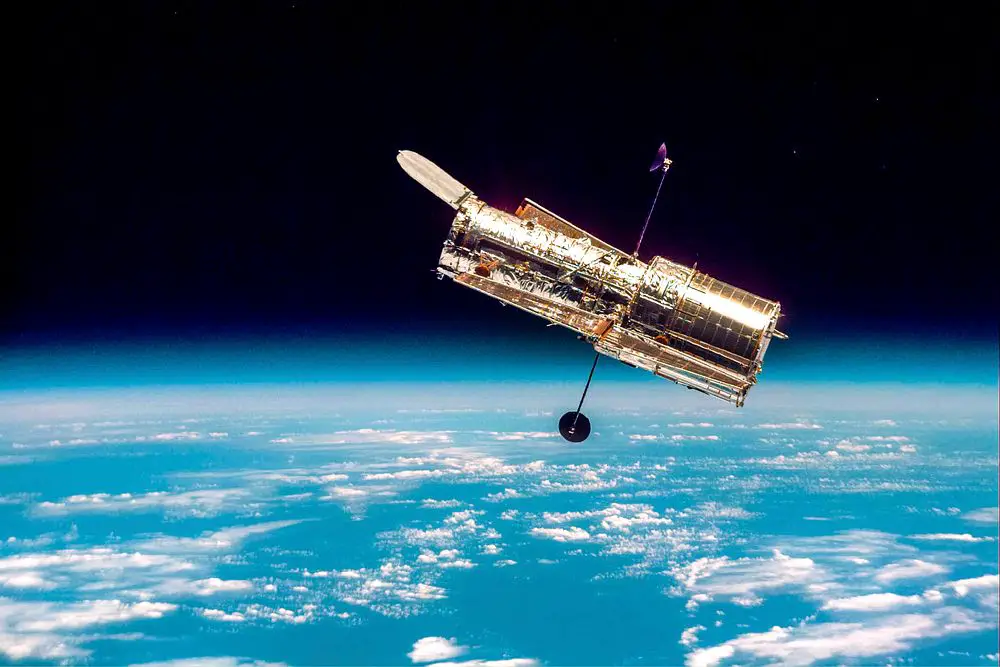With its most recent finding, the Hubble Space Telescope—a well-known symbol of space exploration and astrophysics—has once again stunned the scientific community. In the process of deciphering the universe’s riddles, the Hubble has seen something really remarkable: the elusive ‘forbidden’ light coming from the MCG-01-24-014 spiral galaxy, a faraway galaxy.
This fascinating galaxy, which is located around 275 million light-years from Earth, is the focus of much research. Since these spectral lines occur at extremely low frequencies, they are rarely noticed and are therefore referred to as “forbidden” light. Nevertheless, these ‘forbidden’ lights can be viewed within the high-energy environment of a galactic nucleus, providing insight into the mysterious processes taking place within.
This astounding discovery sparks our curiosity about the complex mechanisms behind the cosmos and opens us new avenues. Researchers from all around the world are excitedly examining this remarkable occurrence in an effort to learn more about the cosmic marvels that are beyond our reach. With each amazing image it releases, the Hubble Space Telescope reveals more and more mysteries about the universe, making it an invaluable instrument in our search for understanding.
A Galactic Spectacle
The Hubble Space Telescope obtained this captivating image of MCG-01-24-014, a spinning, brilliant spiral galaxy. With its complex spiral arms and brilliant brilliance, this galaxy, which is billions of light-years away, exemplifies the utter majesty and alluring mystery of our enormous universe. This celestial wonder’s supermassive black hole, which emits enormous amounts of energy and adds to its mysterious appeal, is its central powerhouse.
This remarkable discovery gives important insights into the intricate processes taking place within these cosmic structures, in addition to a compelling perspective of a distant galaxy. The presence of ‘forbidden’ light, emitted by highly ionized oxygen, in this intriguing image shows the occurrence of tremendously intense events near the galaxy’s center. These occurrences might be the consequence of a cataclysmic galaxy collision or a strong gravitational attraction between gas clouds and stars.
We are able to uncover a greater portion of the cosmic fabric with every new observation, demonstrating the universe’s breathtaking beauty and complex inner workings. We can still explore and contemplate the innumerable beauties that exist outside of our own galactic neighborhood thanks to the Hubble Space Telescope, which serves as our window into the vastness of space.
An Energetic Galactic Nucleus
Astronomers are intrigued and fascinated by the discovery of “forbidden” light, a rare and mysterious phenomena. This fascinating discovery, suggesting the existence of a highly active galactic nucleus, has sparked intense scientific interest. It implies that the central region of the far-off galaxy MCG-01-24-014 is a hive of furious star activity, where celestial bodies collide and dance in a captivating cosmic show. Enthralled by these fascinating occurrences, scientists are eagerly exploring additional investigation and conjecture, propelled by an unquenchable desire to precisely understand the nature and fundamental processes of this astounding demonstration of cosmic forces in action.
Hubble’s Legacy
Ever since its launch in 1990, the incredible Hubble Space Telescope has contributed immeasurable amounts to our knowledge of the vast universe. Hubble’s potent lens and cutting-edge technology have revolutionized our understanding of the universe and been instrumental in many important discoveries and observations.
Hubble just achieved yet another notable milestone to its impressive list of triumphs when it managed to catch the mysterious ‘forbidden’ light of MCG-01-24-014. This astounding discovery emphasizes how important it is for telescopes like Hubble to continue advancing our understanding of the universe.
The Hubble Space Telescope continues to surpass expectations in spite of its advanced age, giving us access to previously unattainable insights into the secrets of space. Its ground-breaking findings refute accepted hypotheses and advance our understanding of uncharted territory. The Hubble Space Telescope will surely continue to lead humankind’s exploration efforts as it deciphers the mysteries of the cosmos and motivates upcoming astronomers and scientists.
Sources
![]()
